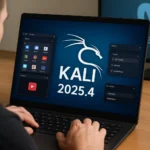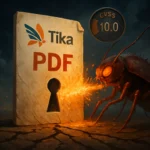Varonis researchers report the emergence of Atroposia, a malware‑as‑a‑service (MaaS) platform marketed at $200 per month. Subscribers gain access to a modular remote access trojan (RAT) offering encrypted command‑and‑control (C2), User Account Control (UAC) bypass on Windows, and stealthy persistence. By packaging post‑exploitation capabilities into a subscription, Atroposia lowers the technical barrier for cybercriminals and accelerates targeted intrusions in corporate networks.
Architecture and evasion: modular RAT with encrypted C2
Atroposia’s architecture is component‑based, splitting functionality across modules for remote desktop, file management, credential theft, and network tampering. Encrypted C2 channels impede straightforward network detection, while UAC bypass is used to elevate privileges and persist on hosts. In practice, UAC bypass means the malware attempts to perform administrative actions without triggering standard Windows prompts, helping it remain undetected longer.
Key modules and threat tradecraft
HRDP Connect: hidden remote desktop without user visibility
The HRDP Connect module spins up a background RDP session that is invisible to the local user. Adversaries can open applications, read email, and browse documents as if they were sitting at the machine. Because the session is concealed, traditional RDP session monitors may not flag the activity, delaying detection and response.
File manager and targeted exfiltration
Atroposia’s file manager mimics Windows Explorer, enabling browsing, copying, deleting, and execution. A dedicated data‑grabber filters files by extension or keywords, compresses them into password‑protected ZIP archives, and exfiltrates them to the C2. The use of in‑memory techniques reduces on‑disk artifacts, complicating forensic reconstruction.
Credential stealer and clipboard interception
The stealer module harvests saved credentials, crypto‑wallet data, and chat files. A clipboard manager captures copied items in real time—such as passwords, API tokens, or wallet addresses—for later misuse. Use of stolen credentials remains a primary initial access vector in breaches, as documented by the Verizon Data Breach Investigations Report (DBIR) 2024.
DNS manipulation and traffic redirection
Atroposia can alter host‑level DNS settings to redirect victims to attacker‑controlled domains. This enables phishing, man‑in‑the‑middle interception, malvertising, fake updates, and even data exfiltration over DNS queries. Such tampering undermines trust in name resolution and can bypass perimeter controls if egress policies are permissive.
Vulnerability scanning and lateral movement
An embedded scanner inventories missing patches, insecure configurations, and outdated software to assess post‑exploitation potential. In enterprise environments, findings such as vulnerable VPN clients or local privilege escalation bugs can enable escalation and lateral movement to adjacent systems. Reports indicate the malware also probes neighboring hosts for weaknesses.
MaaS context: industrialization and scale
Atroposia reflects the broader commoditization of cybercrime. MaaS offerings—similar in spirit to recent toolkits marketed for spam generation or malicious PDF delivery—package reliable tradecraft as a subscription. ENISA’s Threat Landscape assessments highlight the growth of cybercrime‑as‑a‑service models that expand the pool of capable attackers. The FBI Internet Crime Complaint Center (IC3) recorded more than $12 billion in reported losses in 2023, underscoring the economic impact of scalable, credential‑centric intrusions.
Defensive priorities to reduce Atroposia risk
Strengthen privilege control: Enforce privileged access management (PAM), restrict UAC‑bypass techniques via Group Policy and application control, and run browsers and office suites without admin rights. Limiting privileges constrains post‑exploitation.
Monitor remote access behavior: Track hidden or atypical RDP activity, session telemetry, and anomalous logon patterns. Pair EDR/XDR analytics with baselining to detect covert interactive control.
Protect identities and data: Deploy MFA universally, mandate password managers, avoid plaintext secrets, and apply DLP policies around sensitive file types. Credential hygiene is critical given the prevalence of credential theft in breaches (DBIR 2024).
Harden DNS and egress: Audit changes to hosts and DNS settings, validate update sources, segment networks, and restrict outbound traffic to approved destinations. DNS query logging and inspection help surface exfiltration attempts.
Operationalize vulnerability management: Prioritize patching, schedule regular scans, remove obsolete software, verify VPN/agent versions, and test common privilege‑escalation paths. Rapidly addressing exploitable weaknesses reduces the malware’s room to maneuver.
Atroposia illustrates how MaaS platforms have matured from simple script bundles into end‑to‑end post‑exploitation toolsets. Organizations should refresh threat models, increase endpoint and server visibility, and reinforce least‑privilege practices. Emphasizing DNS integrity, continuous RDP monitoring, and disciplined vulnerability management will reduce the likelihood of successful compromise and shorten time‑to‑detect.






